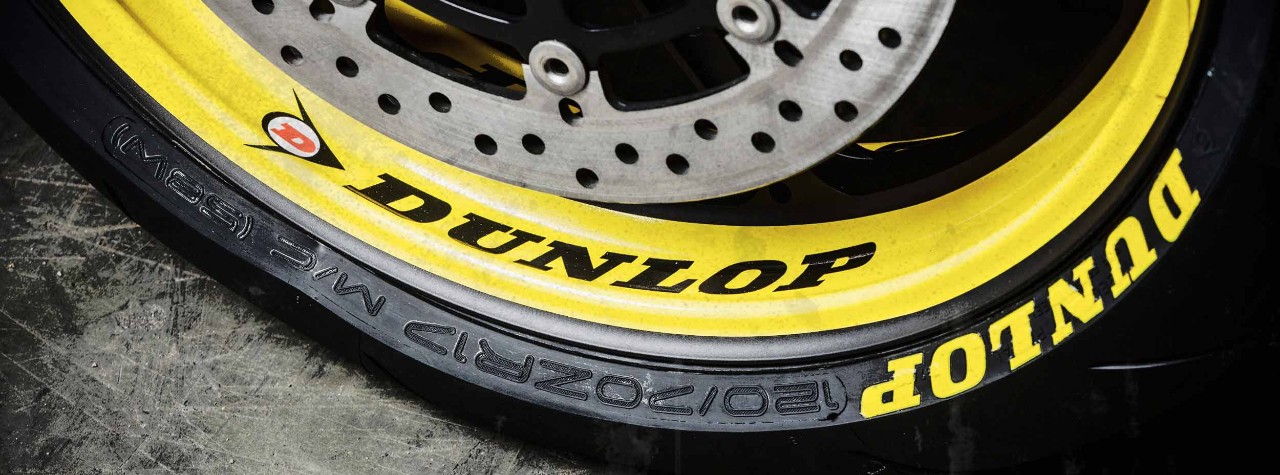
UNDERSTANDING YOUR TYRE AND HOW TO READ THE SIDEWALL MARKINGS.
Sidewall
This is the area of extra-thick rubber that runs from the bead to the tread and gives your tyre its lateral stability. It’s also where you’ll find all of the manufacturer information about your tyre, but what does a number such as 120/70 ZR17 M/C (58W) actually mean? Here’s a little guide to understanding these markings:
1) TYRE WIDTH
This number indicates the tyre’s section nominal width, measured in millimeters from sidewall to sidewall. In this case 120mm. Note: the actual physical width of the tyre on the rim can differ from the nominal width.
2) ASPECT RATIO
This number indicates the tyre’s aspect ratio or height expressed as a percentage of its width. In this case the aspect ratio is 70% of the 120mm width, making it 84mm.
3) WHEEL DIAMETER
On a sports bike tyre these letters are usually “ZR”. The “Z” indicates the speed rating of the tyre, which in this case means it is rated above 240kph/149mph. The “R” denotes that the tyre is of radial type construction. The “17″ denotes that the tyre is 17 inches in diameter whilst “M/C” means the tyre is for a motorcycle.
4) LOAD INDEX & SPEED RATING
The ‘58W’ indicates the load and speed indexes of the tyre and should always be looked at together when you buy a new tyre. In this case the ’58’ denotes that the tyre is rated for a maximum carrying weight of 236kg at maximum pressure. The “W” represents the maximum speed for the tyre when it is correctly inflated and being used under load, in this case 270km/h. Please remember however that when buying new tyres that you match the speed rating with the speed capabilities of your motorcycle, if exceeded, this risks tyre failure, hence you should always replace a tyre with one of at least the same speed rating so that you don’t reduce the speed capability of your bike.
Please refer to the load index and speed rating tables below for more information.
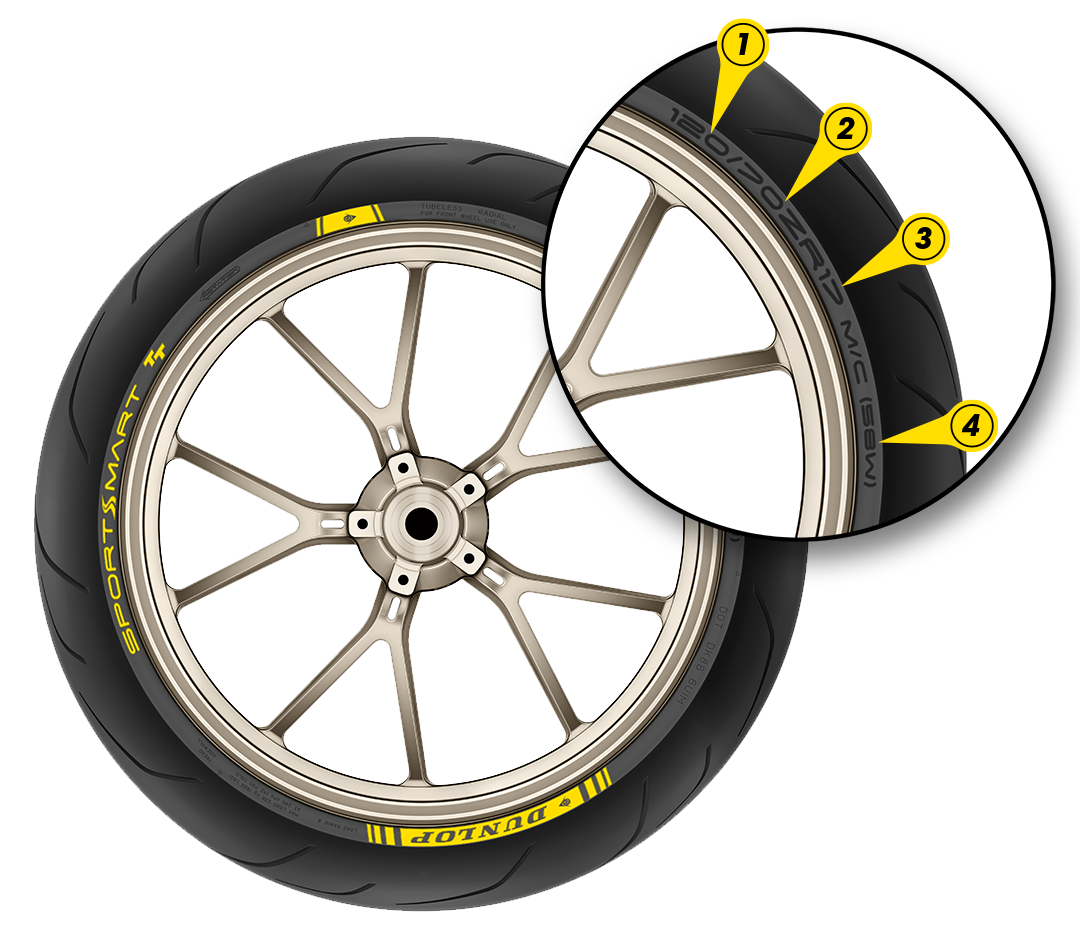
What are the different components which makeup your tyre?
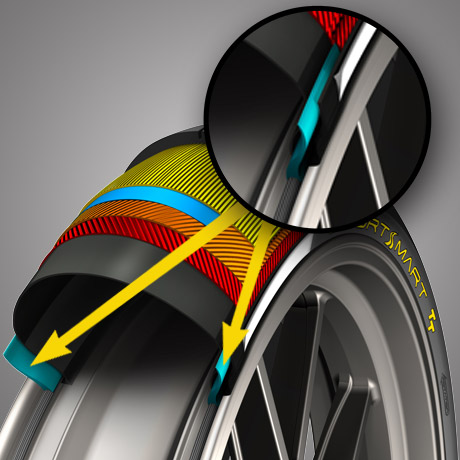
APEX
----------
The apex is used to reinforce the sidewall and sits on top of the bead. Apex shape and material play an important role in the way a tyre behaves and provides feedback.
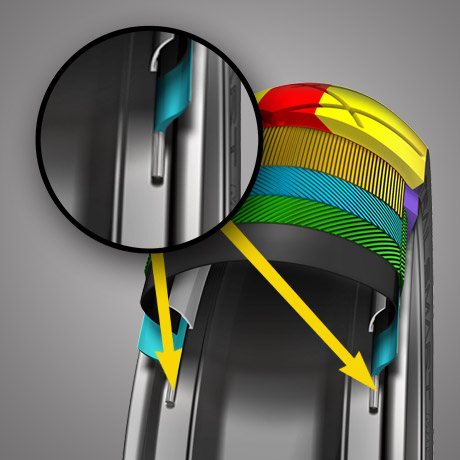
BEADS
----------
The beads are made from high-strength braided steel coated in rubber, and create an airtight seal between your tyre and the rim of the wheel.
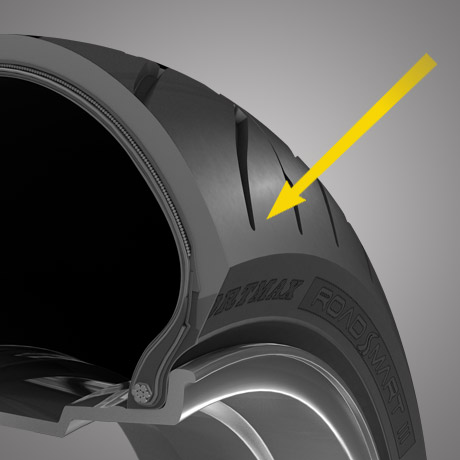
SHOULDER
----------
The shoulder area is between the centre area and the sidewall of the tyre. The shoulder design and construction plays an important role when the bike is leant over.
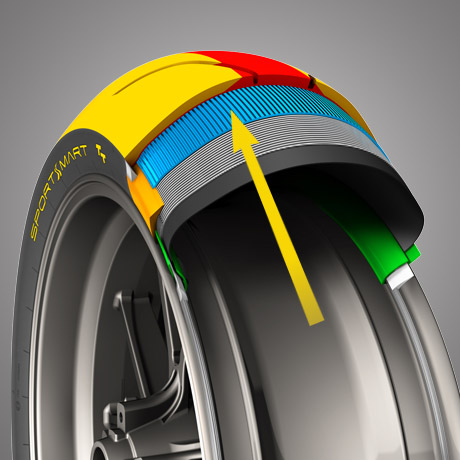
BELT
----------
Steel or aramid belts are placed around the tyre to reinforce strength, reduce dynamic growth at speed and provide rigidity. In some cases breakers, which are woven sheets of rubber-coated fabric, can be used for extra strength, puncture resistance and durability.
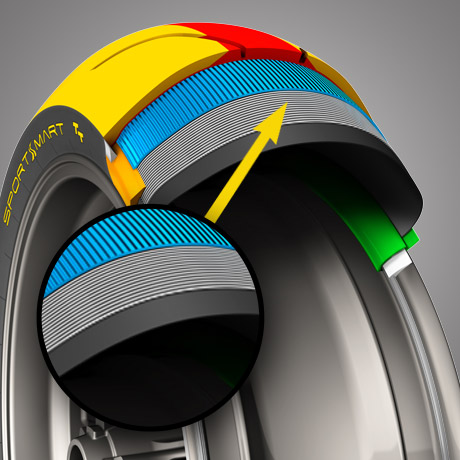
PLY
----------
The plies are the layers of fabric that make up your tyre’s skeleton, and are typically made of fibre cords that are woven together and coated with rubber. These allow your tyre to be flexible but not elastic. One or more layers called carcass plies placed directly above the inner liner give your tyre its strength.
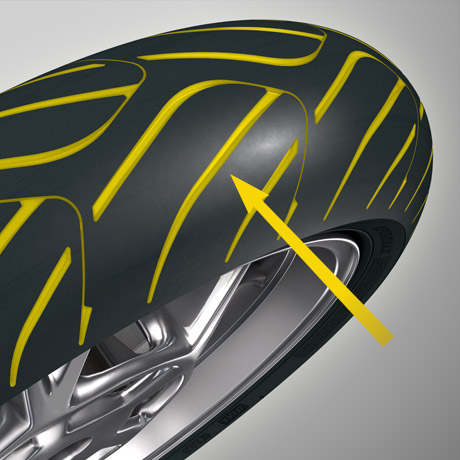
TREAD
----------
This is the soft area of your tyre where the rubber meets the road. The tread provides both cushioning and grip, and its design and compound determine many of your tyre’s most important performance features. The tread can include different compounds for centre and shoulder area.
LOAD INDEX AND SPEED RATING TABLES.
LOAD INDEX
21
22
23
24
25
26
27
28
29
30
31
32
33
34
35
36
37
38
39
40
41
42
43
44
45
46
47
48
49
50
51
52
KG
82.5
85
87.5
90
92.5
95
97.5
100
103
106
109
112
115
118
121
125
128
132
136
140
145
150
155
160
165
170
175
180
185
190
195
200
LOAD INDEX
53
54
55
56
57
58
59
60
61
62
63
64
65
66
67
68
69
70
71
72
73
74
75
76
77
78
79
80
81
82
83
KG
206
212
218
224
230
236
243
250
257
265
272
280
290
300
307
315
325
335
345
355
365
375
387
400
412
425
437
450
462
475
487
speed rating
F
G
J
K
L
M
N
P
Q
R
S
T
U
H
V
W
ZR
KM/H
80
90
100
110
120
130
140
150
160
170
180
190
200
210
240
270
+ 240


